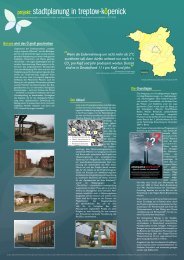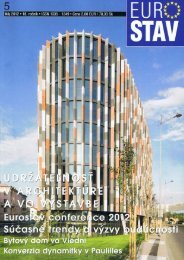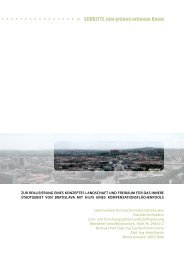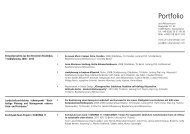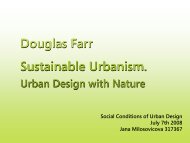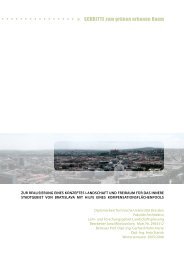Thesis document - Jana Milosovicova - Urban Design English
Thesis document - Jana Milosovicova - Urban Design English
Thesis document - Jana Milosovicova - Urban Design English
- No tags were found...
You also want an ePaper? Increase the reach of your titles
YUMPU automatically turns print PDFs into web optimized ePapers that Google loves.
4 ConclusionsBased on the need to address the climate-related problems in – and caused by – citieswith the help of urban design, this <strong>Thesis</strong> aimed to review the literature that brings recommendationsand guidelines addressing extreme heat conditions in moderate climatecities; and to use the findings as a base for a set of Climate-Sensitive <strong>Urban</strong> <strong>Design</strong>Guidelines.The <strong>Thesis</strong> summarized the climatic features of cities, being dry and hot and thus havingthe effect of “concrete deserts” (that are accepted even within many “sustainable”developments). Throughout the world, there are researchers and designers addressingthis issue. Among them, Givoni (1998) and Emmanuel (2005) are considered the mostauthorative sources for urban designers. The review however showed that while focusingon the urban form and geometry, these sources do not address in depth the environmentalaspects of urban climatic considerations – the issues of energy flows and watercycle; and additionally avoid suggesting particular recommendations for designing inmoderate climates. Other sources focus well on the environmental processes in cities,such as the climatic aspects of energy flows and water cycles (Sukopp and Wittig 1998;Kravčík et al. 2007; Marzluff 2008); these sources however omit particular design recommendations.This gap, fortunately, is filled by other valuable sources that address thenatural water cycle and energetic processes – particularly by guidelines implemented byvarious cities (Chicago 2003, NYC 2007, Berlin 2010).Referring to the reviewed sources, this <strong>Thesis</strong> aimed at a connection of the main streams– the “environmental” and “architectonical” – in understanding the climatic aspects ofthe built form of cities. The main legacy is: Learn from nature, where the streams ofwater and ventilation are unobstructed (fig. 94).Fig. 94 Diagram of energy flows, water andwind in an idealized urban environment58Climate Sensitive <strong>Urban</strong> <strong>Design</strong> in Moderate Climate Zone: Responding to Future Heat Waves. Case Study Berlin Heidestrasse/Europacity



